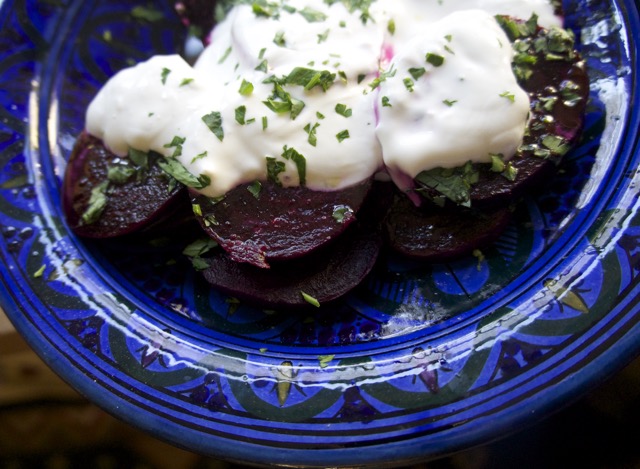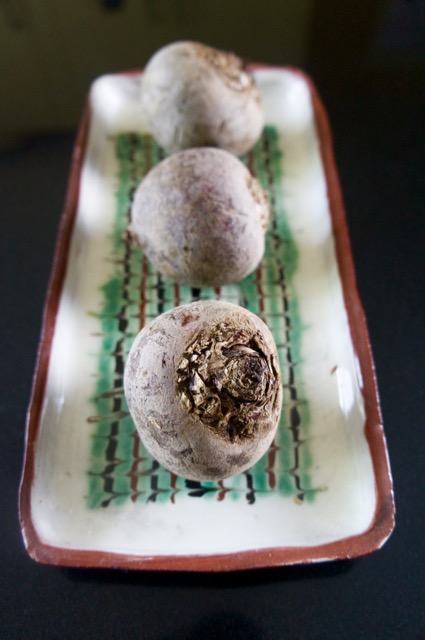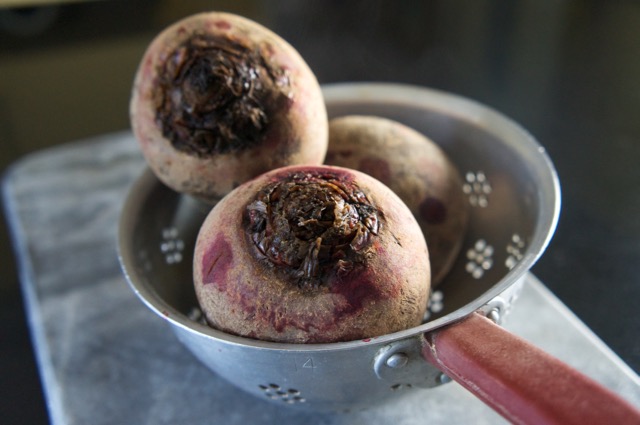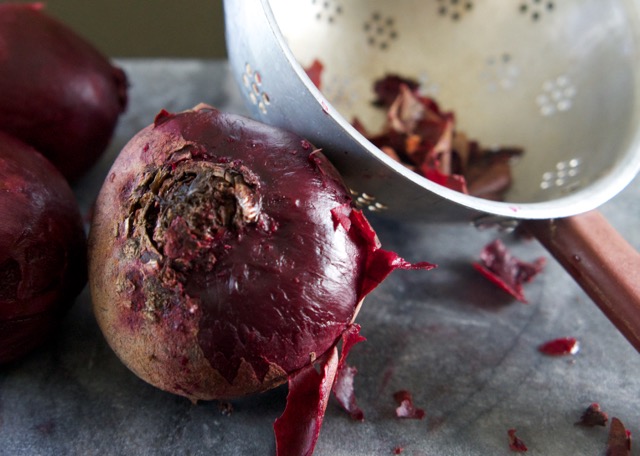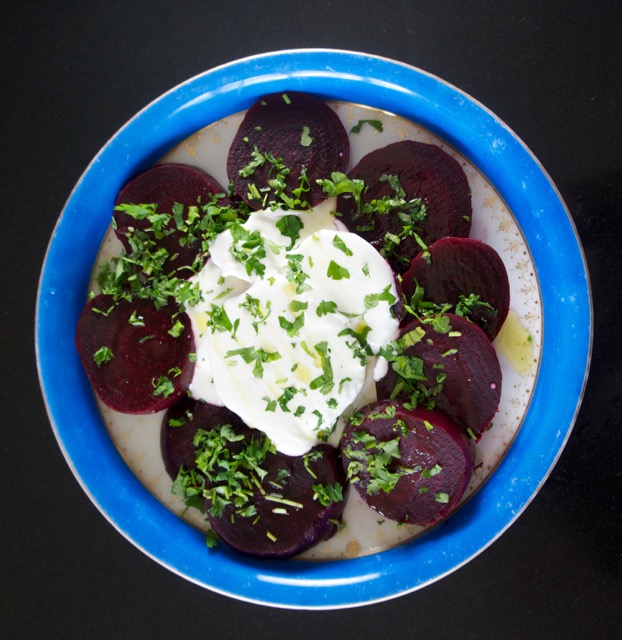This recipe originated from one of my favourite cookbooks, Moro by Sam and Sam Clark. A cherished tome that is rarely put back into the bookshelves, it is usually found amongst the other well thumbed and regularly used cookery books jostling for pride of place on my coffee table. In fact I have recently had to buy a larger one with storage space inside so I can now see who is talking to me from the other side of the room.
The recipe is so simple there is nothing much that I have found the need to change, although I do use a Muscat vinegar instead of lemon juice, but obviously lemon juice is fine if this is what you have to hand.
When I was a young girl I was put off eating both beetroot and cauliflower for many years after visiting my Aunty Jean in hospital. Whilst my parents and I were sitting by her bedside, she was served an NHS lunch which I can remember to this day. A plate of cold, watery, cauliflower cheese stained purple from the pickled beetroot rolling around aimlessly on the plate as though it was trying to escape its fate.
Fortunately, beetroot regained its place in my affections when I started to grow my own many years later and now it has rightly earned its place in my vegetable hit parade.
Beetroot is one of the star performers in my vegetable patch. It seems to like my very sandy soil and grows quite happily without the need for much attention apart from ensuring it is watered regularly to prevent bolting. I usually plant the variety ‘Boltardy’ which, as its name suggests, has resistance to bolting and I must say it has never been a problem for me. Successive sowings ensure a steady supply over the summer and my table will rarely be without some kind of beetroot dish to accompany my planned al fresco dining (fingers crossed) throughout the warmer months.
Because cooking the beetroot is the part that takes the most time, I usually cook more than I need and keep the rest in the fridge, ready for use over the following few days.
Sweet, earthy, freshly cooked beetroot is a world away from the sliced vinegary stuff found pickled in jars on the supermarket shelves. If it is something new to you I would urge you to try it and you will be pleasantly surprised. It is worth dipping your metaphorical toe in the water for the health benefits alone.
Over the past couple of years beetroot has had a welcome resurgence in popularity due its new found status as a super-food. It is very rich in nitrates which has been proven to lower blood pressure, something that is a concern for me personally. Other recent claims is that it can aid the flow of blood to the brain thereby reducing the progression of dementia and it can help boost exercise levels. It has long been thought of as an aphrodisiac (I shall be closely monitoring the supply in the local shop next week!) and even the cooking water can be used as an anti-dandruff treatment.
The cooking method for this particular recipe is boiling as the beets used are not too large. I am also a great fan of it baked which is good the for larger beets that are a little tougher in the middle. Wrapped in foil and baked for 1-2 hours, depending on the size, they are superb served simply with a drizzle of balsamic vinegar, some watercress and feta or tangy goats cheese to counter the sweetness of the beet. They can be put in pasta dishes, are a great accompaniment to curries and of course can be used in cakes and soups, the most famous of which, the Eastern European Borscht, for some unknown reason always reminds me of 1970’s dinner parties.
Obviously the quickest and easiest way of eating beetroot is raw. Smaller beets can be grated and used in variety of different salad dishes and over the summer I will be posting a selection using beets from the garden.
The only drawback I can think of to beetroot is the colour can stain your hands, albeit temporarily. If you are preparing a meal for visitors it is a good idea to wear disposable food grade gloves otherwise your guests might think wonder what you have been up to.
- 500g cooked and peeled beetroot
- Muscat Vinegar or Lemon Juice
- 1 Tablespoon Olive Oil
- Handful Flat Leaf Parsley, chopped
- Sea Salt and Black Pepper
- 1 Clove of Garlic, crushed to a paste with salt
- 200g Greek Yoghurt, thinned with 2 Tbs milk
- Once the beetroot has been peeled, cut into 1cm slices and arrange on a large plate.
- Drizzle over a little Muscat vinegar or a squeeze of lemon juice and the olive oil.
- Sprinkle over half the parsley.
- Mix the yoghurt with the crushed garlic and pour over the beetroot.
- Drizzle with a little more oil and the rest of the parsley.
There is a website dedicated solely to celebrating this glorious purple orb. The guys over at www.lovebeetroot.com have a lovely selection of beetroot recipes and a great list of fun facts about this incredible vegetable.
